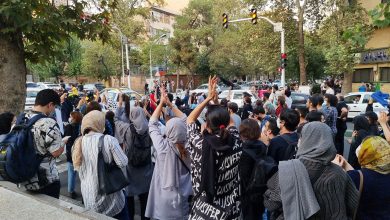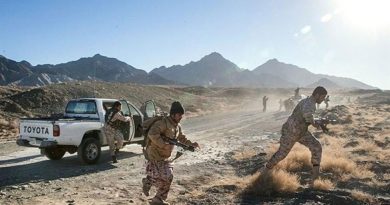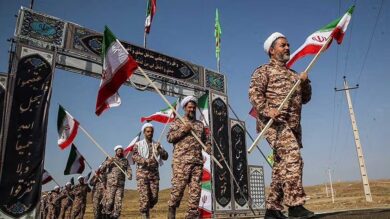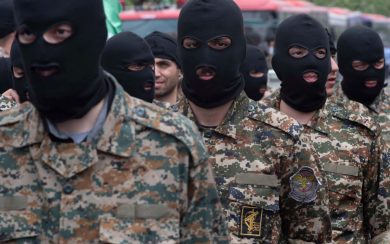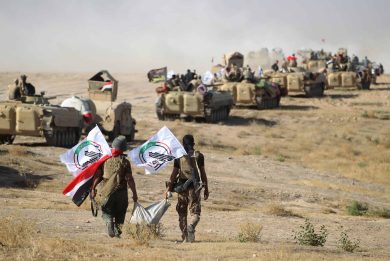For decades, Iranian women have been at the forefront of resistance against systematic oppression, particularly in the fight for bodily autonomy and freedom of choice. One of the most brutal enforcers of this oppression is Iran’s Morality Police, a force designed to monitor, intimidate, and control women under the guise of religious and social order.
The death of Mahsa Amini in September 2022, after being arrested by the Morality Police for allegedly violating hijab laws, became a turning point. Her tragic killing ignited nationwide protests under the slogan “Women, Life, Freedom”, marking a new chapter in the struggle against state-imposed gender oppression.
This report explores:
• The role of the Morality Police in controlling women’s freedoms.
• The ways Iranian women resist and defy these oppressive forces.
• The escalation of state violence and its impact.
• The global response and how the world can support Iranian women.
1. The Morality Police: The Regime’s Tool for Controlling Women
A. What is the Morality Police?
The Morality Police, officially known as the Guidance Patrols (Gasht-e Ershad), was established to:
• Enforce compulsory hijab laws.
• Ensure gender segregation in public spaces.
• Monitor women’s dress code and behavior based on Islamic laws.
They are not just police officers—they operate under the command of Iran’s security forces, including the IRGC, making them an extension of the regime’s repression machine.
B. Tactics of Oppression
The Morality Police use intimidation, violence, and humiliation to enforce compliance. Their tactics include:
• Arrests and detention for “improper hijab” (e.g., loose scarves, visible hair).
• Public beatings and verbal abuse to shame women.
• Forced confessions aired on state TV to instill fear.
• Surveillance technology to track and identify women defying hijab laws.
Their brutality has intensified, leading to fatal consequences, as seen in Mahsa Amini’s case.
2. Iranian Women’s Defiance and Resistance
A. The “Women, Life, Freedom” Movement
The death of Mahsa Amini sparked a historic movement, where:
• Women removed their hijabs in public as a form of protest.
• Schoolgirls chanted anti-regime slogans in classrooms.
• Women-led mass protests erupted in cities across Iran.
The movement quickly became a call for total regime change, not just an end to the Morality Police.
B. Digital Resistance: Exposing the Morality Police
Despite internet blackouts, Iranian women:
• Use social media to document abuses and expose the regime’s violence.
• Share videos of officers dragging women into vans, creating global outrage.
• Organize through encrypted apps to plan protests and warn others.
The Iranian government fears digital activism because it amplifies their crimes to the world.
C. Civil Disobedience: Daily Acts of Defiance
Even under constant threat, Iranian women continue to resist through:
• Walking in public without hijabs, even in heavily policed areas.
• Boycotting businesses that enforce strict hijab laws.
• Supporting detained activists and refusing to comply with police orders.
These small yet powerful acts prove that Iranian women refuse to be controlled.
3. The Escalation of State Violence
A. Mass Arrests and Torture
In response to growing resistance, the Iranian regime has intensified crackdowns by:
• Arresting thousands of women, activists, and journalists.
• Holding show trials, sentencing protesters to long prison terms or execution.
• Using sexual violence as a weapon to break the spirit of detained women.
Despite this state terror, Iranian women continue to fight.
B. Surveillance and AI Policing
The government has:
• Installed facial recognition technology in public places to track women who remove their hijabs.
• Increased internet censorship to prevent the spread of resistance.
• Used plainclothes officers to infiltrate protests and report dissidents.
However, Iranian women find new ways to evade surveillance and continue their defiance.
4. The Global Response: Solidarity with Iranian Women
A. International Protests and Movements
The Women, Life, Freedom movement has inspired:
• Global protests in cities like Berlin, Paris, London, and New York.
• Solidarity actions from feminist movements worldwide.
• Campaigns demanding that governments take action against the Iranian regime.
B. Sanctions and Diplomatic Pressure
The international community has responded with:
• Targeted sanctions against IRGC officials responsible for violence against women.
• Efforts to designate the IRGC as a terrorist organization.
• Increased media coverage to highlight Iranian women’s fight for freedom.
More pressure is needed to hold the Iranian government accountable.
C. How the World Can Help
Governments, organizations, and individuals can:
✔ Advocate for the release of detained women.
✔ Support Iranian activists and journalists in exile.
✔ Pressure tech companies to provide secure digital tools for Iranian women.
✔ Amplify Iranian women’s voices by sharing their stories.
Global solidarity is crucial to ensuring that Iranian women’s fight for autonomy is not ignored.
5. The Future of the Fight for Autonomy
A. The Fall of the Morality Police?
While protests have weakened the Morality Police, the fight is far from over. The Iranian regime:
• Has temporarily reduced patrols but not abolished hijab laws.
• Continues to enforce dress codes through surveillance and economic penalties.
• Is doubling down on repression to maintain power.
Women remain defiant, proving that the fight is not just about hijab laws but about dismantling the regime’s oppression entirely.
B. The Role of Iranian Women in Shaping Iran’s Future
Iranian women have:
• Reclaimed their voices despite violent suppression.
• Proven that freedom and democracy are inseparable from women’s rights.
• Created a blueprint for change that future generations will follow.
Their fight for autonomy is reshaping the nation, and their resistance is unstoppable.
Conclusion: Women, Life, Freedom – A Revolution in Motion
The battle between Iranian women and the Morality Police is a battle for autonomy, dignity, and fundamental human rights. While the regime continues its violent repression, it has failed to break the spirit of Iranian women.
From the streets of Tehran to digital activism online, women’s resistance has inspired a global movement. Their fight is not just for Iran, but for all women who seek freedom from oppression.
What the World Must Do Now:
✔ Support Iranian women’s fight for autonomy.
✔ Expose and condemn the regime’s human rights violations.
✔ Advocate for stronger international pressure on Iran.
✔ Keep the movement alive—share their voices, their struggles, and their courage.
Join Our Newsletter!
Stay informed with the latest updates, news, and ways to take action in the fight for justice and global security. Sign up now to get updates delivered straight to your inbox!

